You’ve bought your plants, set them up in a cosy spot, and everything seems fine. Then, one day, a tiny insect flutters near your face. You swat it away, only for another to appear. Looking closer, you notice more of these little flies around your plants.
I’ve been driven crazy by these pests too, but don’t fear—I’ve got some simple solutions for you to get rid of them and stop them from coming back.
What are Fungus Gnats?
Fungus gnats are tiny insects that look like mosquitoes and thrive in warm, moist conditions but can survive in cooler environments. They are poor fliers and often crawl across the soil surface. Their larvae feed on fungi in damp or overwatered soil.
Although harmless to humans, pets, and most healthy plants, fungus gnats can harm seedlings and are as you know, quite annoying to have inside the house.
What Do Fungus Gnats Look Like?
Fungus gnats are small, dark insects about 4 mm (1/8 inch) in size. They look like little mosquitoes more than flies, with long legs and thin bodies.
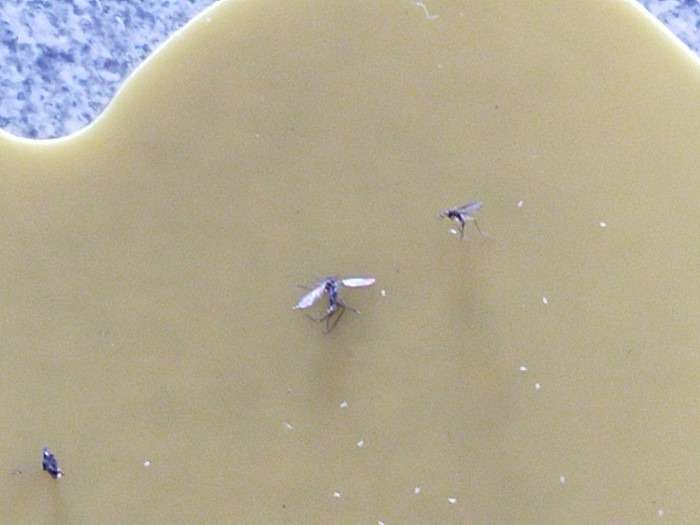
Fungus Gnats vs Fruit Flies
Fungus gnats and fruit flies are not related and have distinct habits and diets:
- Fruit Flies: Larger, feed on decaying fruit or sugary substances, and are usually found near kitchens or garbage.
- Fungus Gnats: Smaller, feed on fungi in damp soil, and are commonly found around houseplants.
Where Do Fungus Gnats Come From?
While fungus gnats can come from outdoors by flying through an open window or door, I find they are often introduced into your home through store-bought potting mix or new plants you got from the store.
To prevent bringing fungus gnats inside, inspect plants and soil carefully before bringing them indoors.
The Lifecycle of Fungus Gnats
To get rid of fungus gnats, we first need to understand their life cycle. Once we know each stage, we can use different strategies to target them, eliminating both the larvae (baby fungus gnats) and the adults.
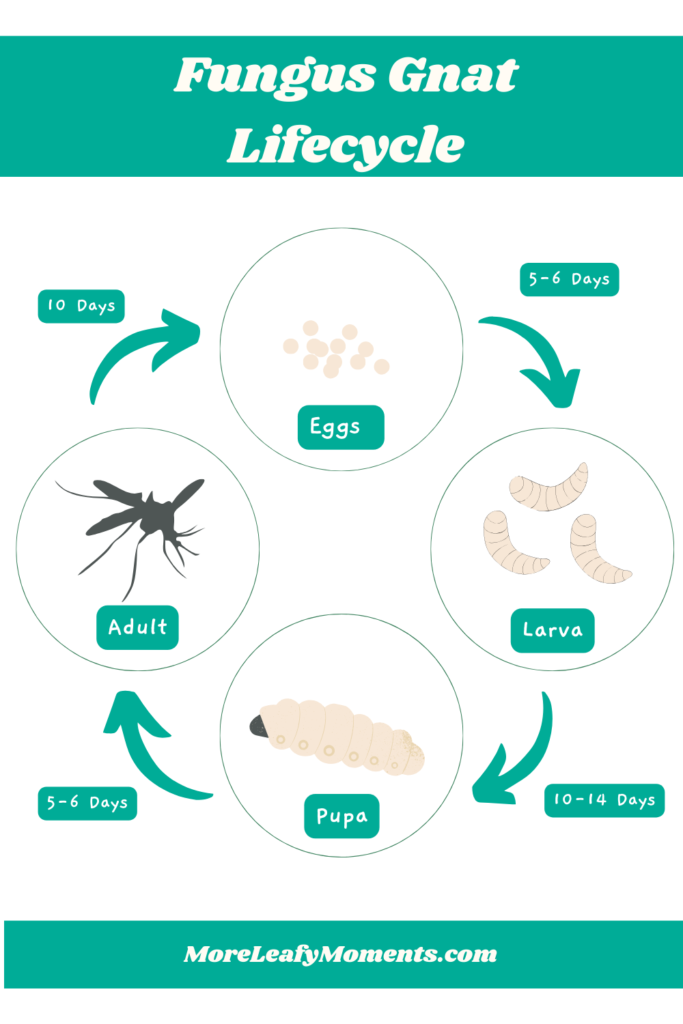
- The eggs are laid in moist soil and will hatch after 5-6 days.
- They then become larva which eat the fungus and other decomposing matter. After 10-14 days they will become pupa.
- The pupa take 5-6 to days until they finally hatch into adults.
- The adults will live for around 10 days. During this time they can potentially lay hundreds of eggs in the soil and complete the cycle.
Use a Holistic Approach to Get Rid of Fungus Gnats
In my experience, combining multiple strategies is the best way to get rid of fungus gnats in your plants. By tackling the problem from different angles, you’ll have better success in killing both the larvae and the adults, preventing them from coming back for good.
How to Get Rid of Fungus Gnats in Soil and Plants
Our main goal is to kill the fungus gnats in the soil. By targeting the eggs and larvae, we can break the cycle and eventually stop the infestation.
Over time, the adults will die off on their own. With this in mind, let’s have a look at our options for tackling fungus gnats at their source.
Isolate the Infested Plant Outside
If you notice fungus gnats early enough consider moving the affected plant outside to prevent the spread of the infestation to other plants. This will also expose the gnats to their outdoor predators who might deal with the problem for you.

Tip: It’s always a good practice to inspect new plants for pests before bringing them home. Once inside, you could isolate the plant for observation, though I know you’re eager to get it in the perfect spot—and I don’t blame you!
Apply a Soil Drench
To directly target the eggs and larvae, you can use a soil drench with some sort of insecticide. This involves mixing the insecticide with water and watering your plants with it, giving the soil a good soaking.
- Apply the soil drench weekly for 3-4 weeks to ensure the fungus gnat larvae are eliminated, effectively breaking the cycle.
- Adult fungus gnats live up to 14 days, a 4-week treatment period is a thorough and safe approach to handle the infestation.
Using Hydrogen Peroxide for Fungus Gnats
A cost-effective option for fungus gnats is hydrogen peroxide, which works quickly to eliminate larvae.
- Buy a 3% hydrogen peroxide solution or lower, as higher concentrations might damage the plant’s roots.
- Ratio: 2 parts water to 1 part hydrogen peroxide.
When applied to the soil, you’ll hear and see the mixture sizzling away as it works its magic. Be careful to avoid getting the solution on the plant’s foliage, as it can cause damage.
How Long Does It Take Hydrogen Peroxide to Kill Fungus Gnats?
The hydrogen peroxide solution kills baby fungus gnats (larvae) almost instantly upon contact, breaking their lifecycle and preventing further infestations.
Note: Despite its scary name, hydrogen peroxide is naturally occurring. While it is chemically produced for commercial use, it’s quite eco-friendly and a safer alternative to many chemicals.
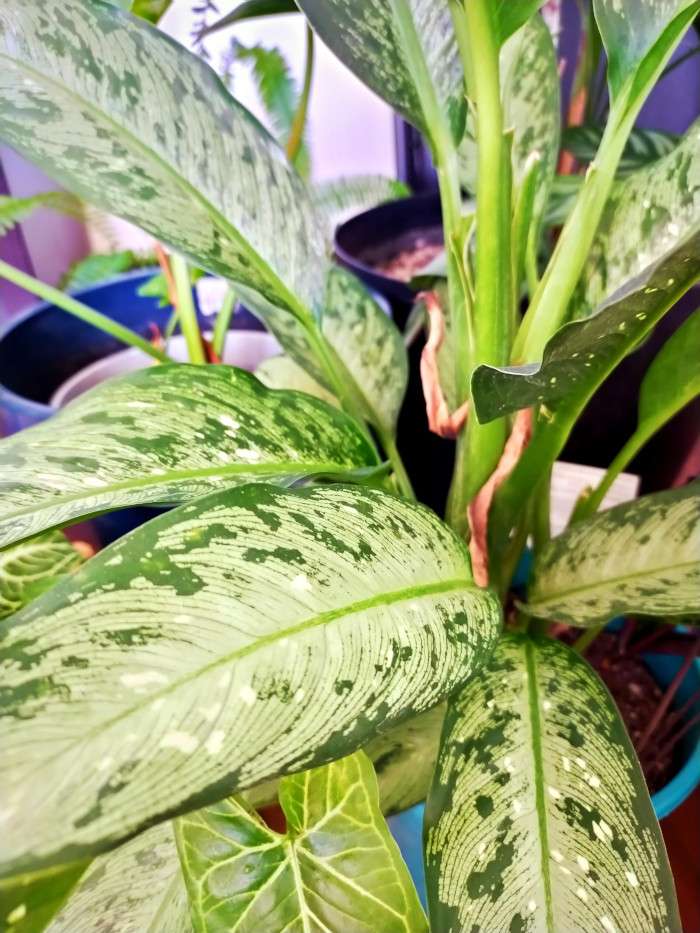
Using Mosquito Bits for Fungus Gnats
Mosquito bits or dunks are another nice option. Follow the instructions as directed on the packaging, but generally, it’s the same concept: mix some bits with water and apply to the soil.
These days, I’ve been using mosquito bits as my go-to soil drench method. I find them reliable and easy to use. I bought a large pack online, so they’re always ready to go when I rarely need them.
Does Neem Oil Kill Fungus Gnats?
If you’re wondering will neem oil will kill fungus gnats, the answer is yes. I find it a good natural option.
- Ratio: Use 10 ml (0.34 fl oz) of neem oil per 1 litre (1.05 qt) of water.
Just be aware—it can be quite smelly, so it’s best to apply it outside or with some windows open.
These days I find neem oil can be a bit pricey compared to other options like mosquito dunks or hydrogen peroxide, so that’s something to consider.

Change the Potting Soil
If the infestation is severe, replacing the soil can eliminate the fungus gnats and improve drainage for healthier plant growth. Here’s how to do it:
1. Remove the Plant
Gently take the plant out of its pot. Clean the dirt off the roots to remove any remaining larvae or eggs. For detailed guidance on repotting a plant without damaging it, check out my article on how to repot a plant successfully.
2. Clean the Pot
Rinse the pot thoroughly to eliminate any stragglers hiding away.
3. Dispose of the Contaminated Soil
Leave the soil out in the sun to dry out. The heat and lack of moisture will kill off any remaining larvae. Once dried, the soil can be safely added to compost, used in a raised garden bed, or used as organic material when repotting other plants.
4. Prepare New Potting Soil
Use a fresh, high-quality potting mix. Consider adding perlite or other light materials to improve drainage. This helps prevent waterlogged soil, which is conducive to fungus gnat infestations.
5. Soil Drench Treatment
Before planting, treat the new soil with a soil drench using hydrogen peroxide, neem oil, or mosquito bits to ensure any eggs or larvae present in the new mix are killed off.
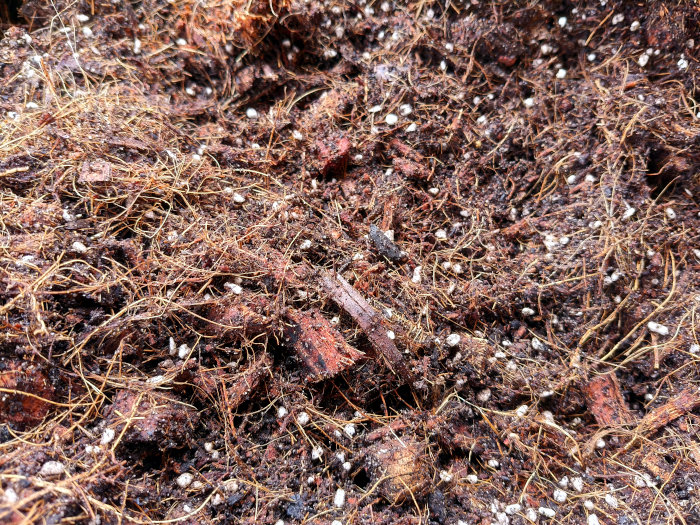
How to Get Rid of Fungus Gnats Naturally
While soil drench treatments are effective and often natural, there are also other simple steps we can take to treat and prevent fungus gnats in our indoor plants.
Use Proper Watering Practices
Proper watering is crucial for preventing fungus gnats, as they thrive in damp conditions. By controlling the moisture levels in your soil, you can remove the ideal environment for gnats and disrupt their egg-laying cycle.
- Keep the top layer of soil dry by watering your plants less often. Consider bottom watering instead of watering from the top.
- Let the soil dry out as much as your plant can tolerate to reduce gnat numbers by destroying eggs and larvae.

Tip: Use a well-draining potting mix to prevent the moist conditions that fungus gnats thrive in.
Use Sticky Traps for Fungus Gnat Control
I always use sticky traps as part of my strategy for controlling fungus gnats. They help me quickly identify when an outbreak occurs and allow me to take action before it gets out of hand. You can use them in the following ways:
- Attract adults: Fungus gnat adults feed on plant nectar and are drawn to yellow sticky traps. These traps help reduce egg-laying and break the infestation cycle.
- Homemade traps: Mix something sweet, like apple cider vinegar, with a few drops of dish soap in a bowl or container. The gnats are attracted to the sweet smell and become trapped when they touch the soap.
- Monitor your plants: Sticky traps are a useful tool for detecting fungus gnats early, allowing you to act before they spread to other plants.
I like to check my sticky traps every week as part of my plant care routine.

Tip: Even if you manage to eliminate all the adults (which is unlikely), there may still be eggs and larvae present in the soil, requiring additional treatment.
Placing Physical Barriers
Adult fungus gnats lay their eggs in the top layer of the soil. Replacing this top layer of soil with grainy textures like sand or small gravel will work as a protective barrier preventing adults from laying their eggs and larvae from breaking out.
Benefits of Physical Barriers
- Provides a protective barrier that makes it harder for fungus gnats to infest the soil.
- Looks nice in your pots.

Cons of Physical Barriers
While physical barriers are effective, I find they can a bit annoying. Some of the things I don’t like about them include:
- Watering: Depending on how you water your plants, sand or gravel may mix with the soil, making it harder to manage.
- Moisture Monitoring: You may find it hard to judge the moisture level in the soil just by looking at the surface, as the grainy texture can hide the soil underneath.
- Finger Testing: It’s harder to poke your finger into the soil for a moisture check when the surface is covered with sand or gravel.
Tip: It’s a good idea to use this method on every plant. Any plants that are left unprotected are still at risk of a fungus gnat infestation.
FAQ
Can I Use Fly Spray for Fungus Gnats?
Using fly spray to control fungus gnats is not an effective long-term solution. While fly spray will kill the adult gnats, it won’t affect the larvae in the soil, so the problem won’t be solved.
Additionally, the chemicals in fly spray can accumulate in the soil, potentially harming your plants and creating an unhealthy environment for you. Therefore, I don’t recommend using fly spray as a control method for fungus gnats.
Do Fungus Gnats Bite?
No, fungus gnats don’t bite. They feed on fungi in the soil and are harmless to people and animals. However they can damage seedlings as they feed on the soil around the roots of plants.
Does Diatomaceous Earth Kill Fungus Gnats?
Diatomaceous earth can kill fungus gnats, but it only works effectively when the soil is dry. Since most plants need regular watering, this can limit its use.
For best results, apply a thin layer to the surface of dry soil to target both adult gnats and larvae. It becomes ineffective when wet.
Be aware that dry diatomaceous earth can be harmful to the respiratory system if inhaled, so precautions should be taken during application.
Does Cinnamon Kill Fungus Gnats?
Cinnamon won’t kill fungus gnats directly, but it may help reduce their numbers by disrupting their food source—fungi in the soil. Cinnamon is thought to have anti-fungal properties, so it may limit the fungi the gnats feed on.
That said, I’d go for more reliable options like the ones mentioned in the soil drench section.
Conclusion
Effectively managing fungus gnat infestations in your houseplants requires a combination of strategies. I always recommend soil drenches in some form to kill the baby fungus gnats in the soil, helping to break the cycle.
I also like using sticky traps to monitor for fungus gnats and to catch any adults before they start laying eggs.
Remember to stay consistent in your efforts, as breaking the gnat’s lifecycle may take time and persistence. With the information you’ve got now, your house will soon be gnat-free.
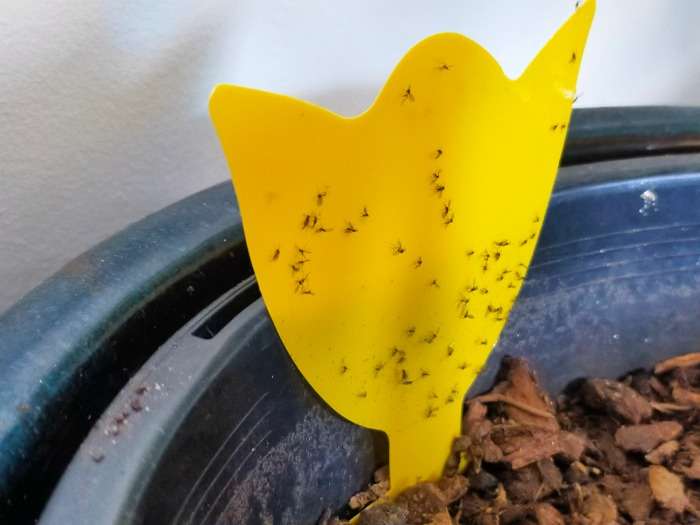
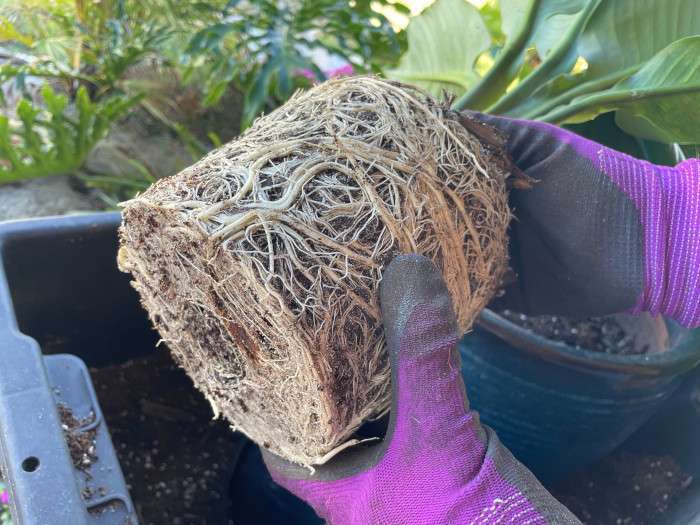

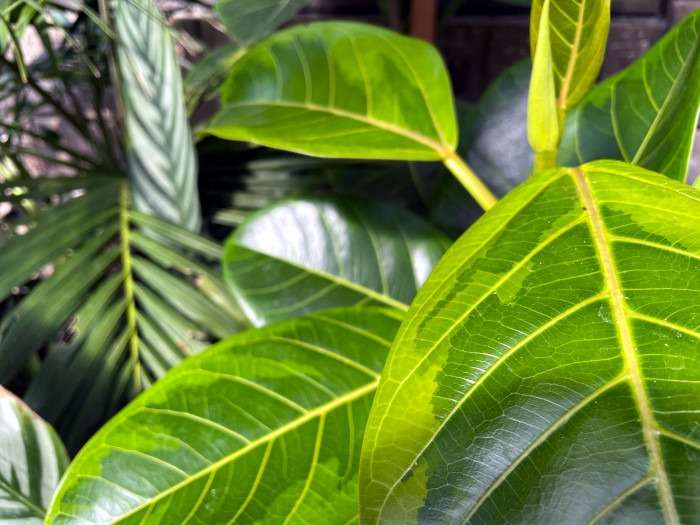
Very thorough & helpful information! I will try these methods on my indoor plants. Thanks!